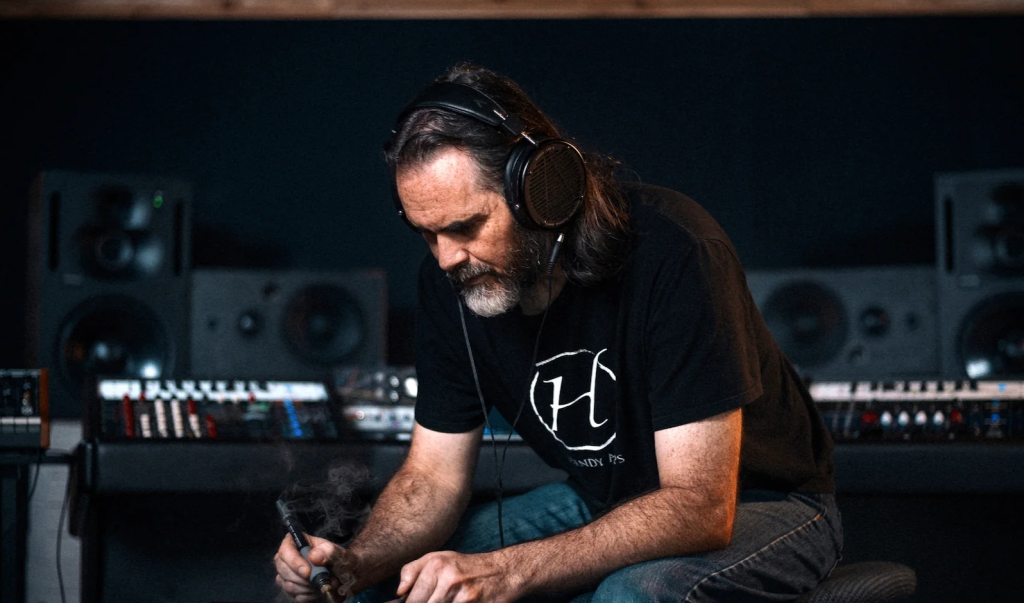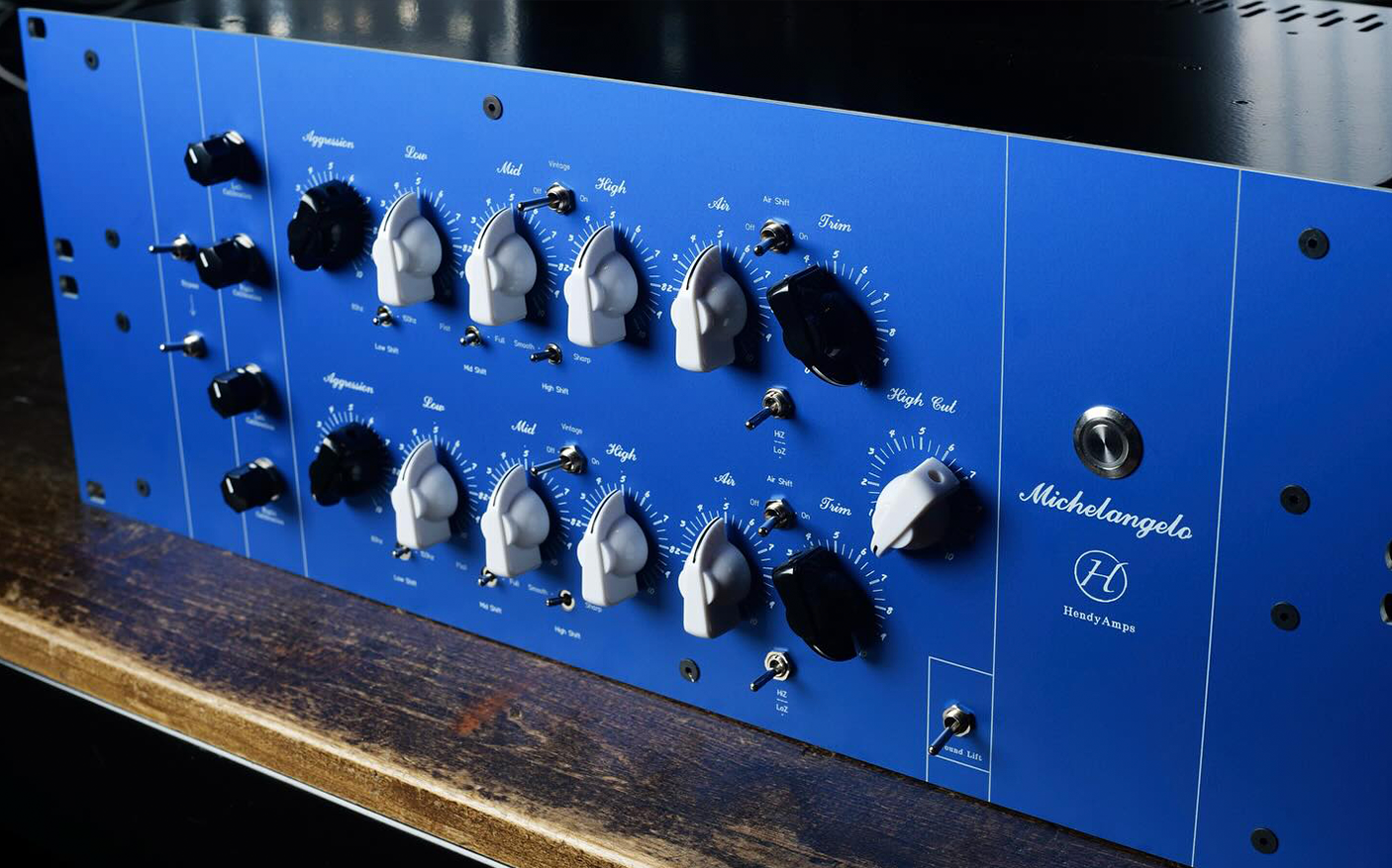At Audio Animals we’re always trying to push boundaries and progress the audio engineering industry in as many ways as possible. We have now landed the opportunity to branch out into the world of building high-end audio equipment with the help of experts in this field Hendy Amps.
After complaining to Jason at SX Pro over and over again, that something new needs to come out for us audio engineers. Something that isn’t just another EQ, another compressor, another colour box. We want something unique, something nobody has done and something that is truly different. I mean how many EQ’s and compressors do you actually need before it gets too much.
Jason suggested “why don’t you custom build something how you want it.”
I said “I know what I want, I just wouldn’t know where to start mate.”
Jason replied “OK leave it with me I know just the man.”
Next thing I know we are looped into a conversation with Chris at Hendy Amps, explaining our ideas and what we want from a custom unit. You know when you can tell when someone is equally as excited as you, about the prospect of this idea actually being able to work. Turns out it works, and not only does it work it sounds better than anything I have ever heard. Never did we think our idea would become the new reimagining of the highly renowned Michelangelo EQ.
The idea we came up with, or rather the issue we have when using saturation whilst mastering, is that whenever you apply saturation you can never push it as much as you want. Too much and you find the gain increase is too loud and you have to dial back to get a pleasing sound at the desired volume. So the idea behind the the Michelangelo XL is to be able to push the Mosfet section (bottom) to achieve the desired saturation amount, whilst simultaneously reducing the Tube section (top) to even out the curve. This results in instead of the saturation making the target frequency louder, the target frequency stays the same volume but you achieve the sense of the frequency becoming thicker and more saturated. It is really hard to explain without a visual video showing the frequency curve. This will be coming soon to our YouTube channel as soon as this unit lands with us in the UK.
For saturation in my mastering chain, I currently use the Blackbox HG-2 and I love it. I just always find I’m limited with it. For instance with the blackbox I have to choose between applying saturation to the lows, highs or entire frequency range. With the Michelangelo XL I can apply saturation independently to the lows, mids, highs and air band. I then always found I wanted selectable frequency ranges for the low end on the blackbox. Sometimes I didn’t want the lows to catch the top of the kick and only wanted to affect the frequencies in the more sub frequencies to add weight. With the Michelangelo XL I have selectable frequency ranges of 80hz or 150hz. This way I can choose if I want to saturate the top of the kick or just affect the frequency around 80hz and below.
Last night we had the pleasure of hearing it for the first time. We know how good the original Michelangelo sounds, but the question was how good will it sound with another one strapped to it in parallel using mosfet instead of tubes. Turns out unbelievably good. I was left open mouthed, pulling all sorts of faces as Chris showed us exactly what it was capable of. To hear our idea come to life and sound this good was really special. We heard it over some drums Chris had recorded and the weight he was getting into the kick and how controlled it was, was perfect. It was everything I always wanted but had never been invented.
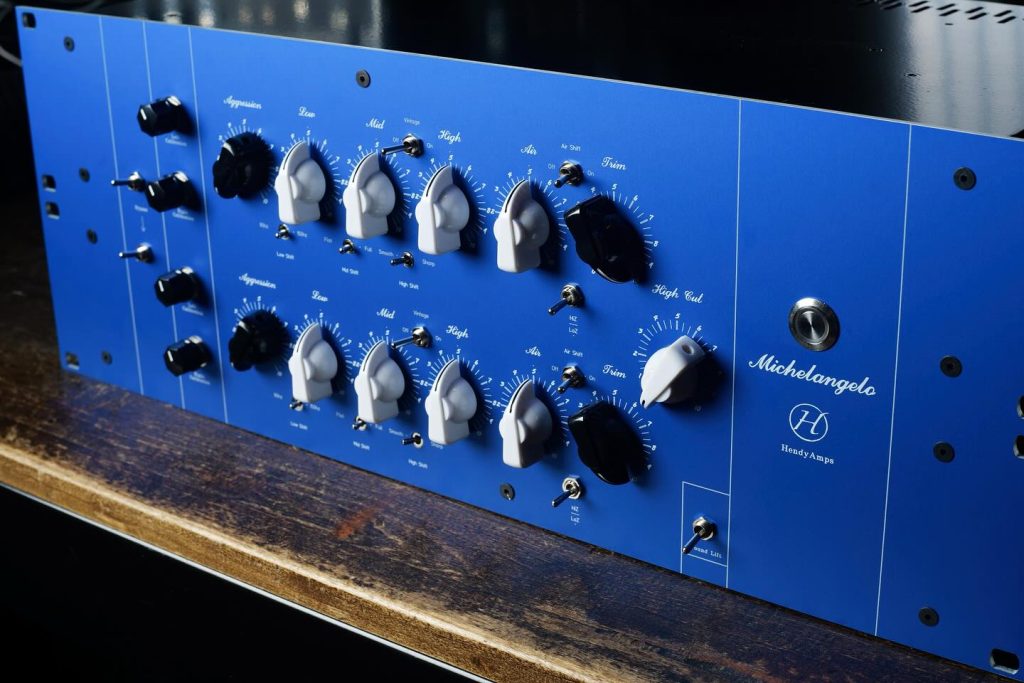
The AGGRESSION control alters the drive in the circuit, allowing you to push the tubes or mosfet for extra saturation.
The LOW, MID, and HIGH controls manipulate the three EQ bands, but in a way that adds more dynamic, harmonic content the higher the EQ is set. Take note that the Mid control covers a massive amount of territory while the Low and High controls are narrower by comparison.
The AIR control boosts the ultra high frequencies.
The HIGH CUT is an addition found only in the XL version as will roll off the air band in a really pleasing way.
LOW SHIFT changes the Low control in order to target all frequencies below 150hz or 80hz.
MID SHIFT alters the response of the Low and Mid controls, essentially assigning the low mids to either control.
HIGH SHIFT changes the High control in order to target the frequencies above 1khz or 2khz.
The VINTAGE switch toggles between a “modern” mode (think more hifi), and a “vintage” mode (darker, older sounding).
LoZ/HiZ alters the output impedance of the Michelangelo in order to dial in either a more coloured tone (HiZ) which will interact with gear following it in your chain, or a more clean tone (LoZ) which is largely unaffected by gear following it in your chain.
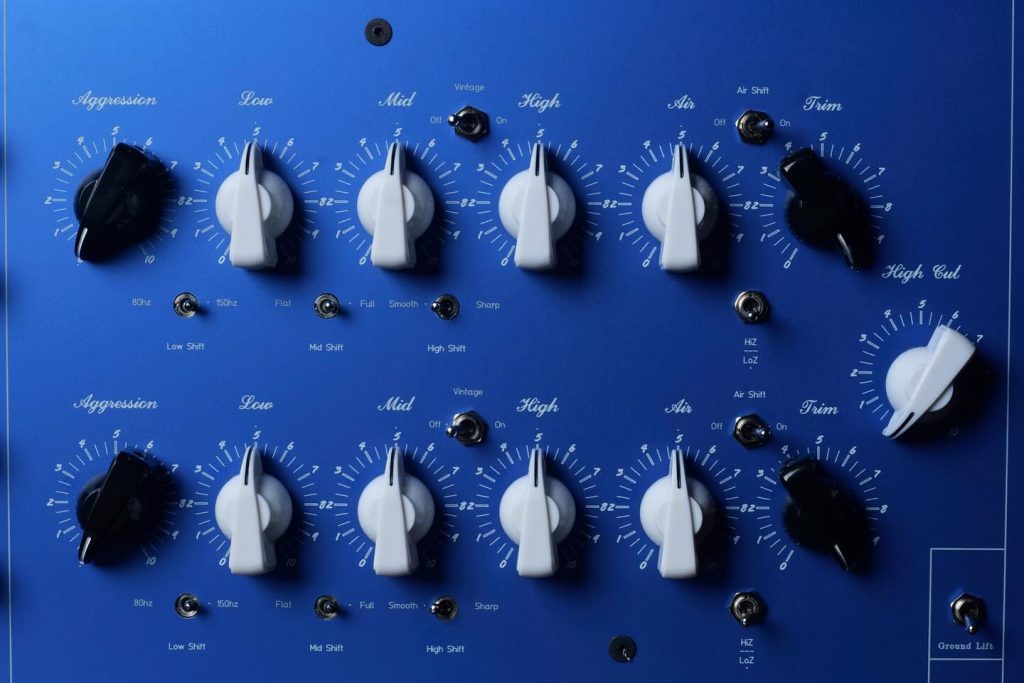
I (Paul Ashmore) have gone with the standard black version. Mine will have red aggression and trim knobs, and the rest will be white. This version is the prototype model that I will cherish forever. You will never see this one on Reverb or Ebay. The only difference mine has compared to the unit that will be released to the general public, is that I have added my name to it. I didn’t want to add any modification because it was already perfect.
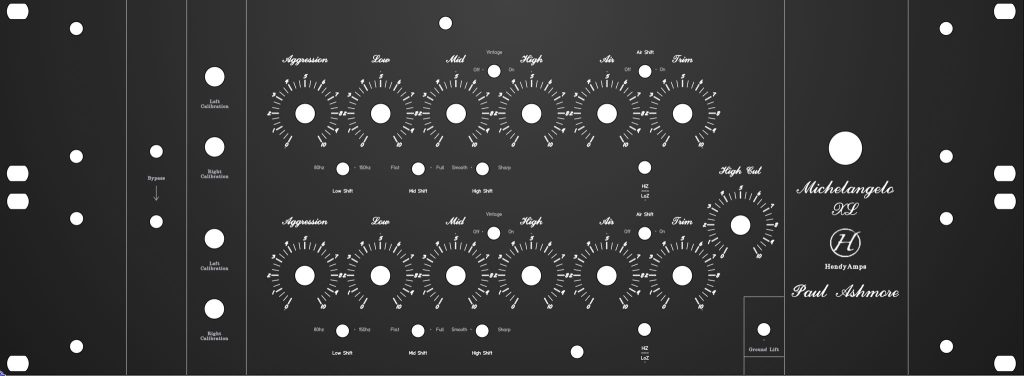
Nick Burchall’s version also has his name signed on it as this unit was something we both brainstormed and had equal input into. He chose the blue version, so that we had two slightly different looking units. His will have black aggression and trim knobs with all other knobs white.
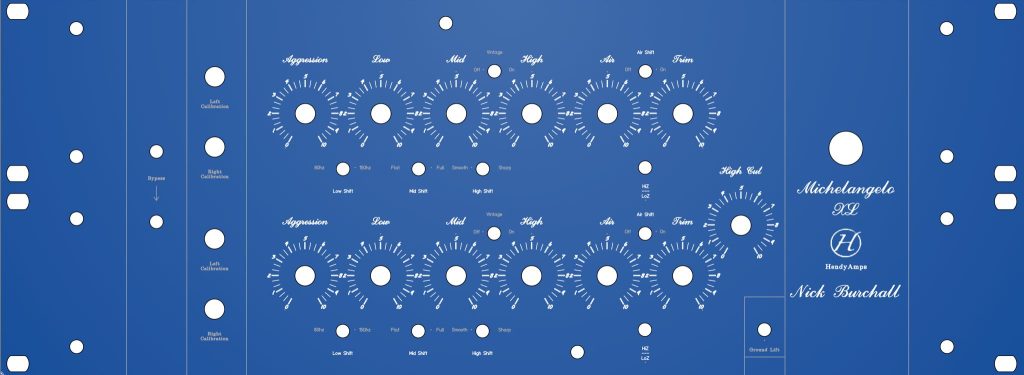
Lastly I feel it is important to give massive credit where credit is due. Chris at Hendy Amps took what was a crazy idea and turned it into reality. He wasn’t even sure it would work, but was excited to try. The mans a genius because he managed to bring it to life. It’s easy to say I want something to do this, this and this. But to know what is possible and find a way to make it work is a special trait to have. We couldn’t have done this without the help of Chris and his mad skills. He was a pleasure to work with on this project and the excitement in his voice when explaining what everything does and what is possible, from one engineer to another told me everything I needed to know about how good the unit is. If you ever need a custom build, however crazy your idea may be, Chris is your man.
